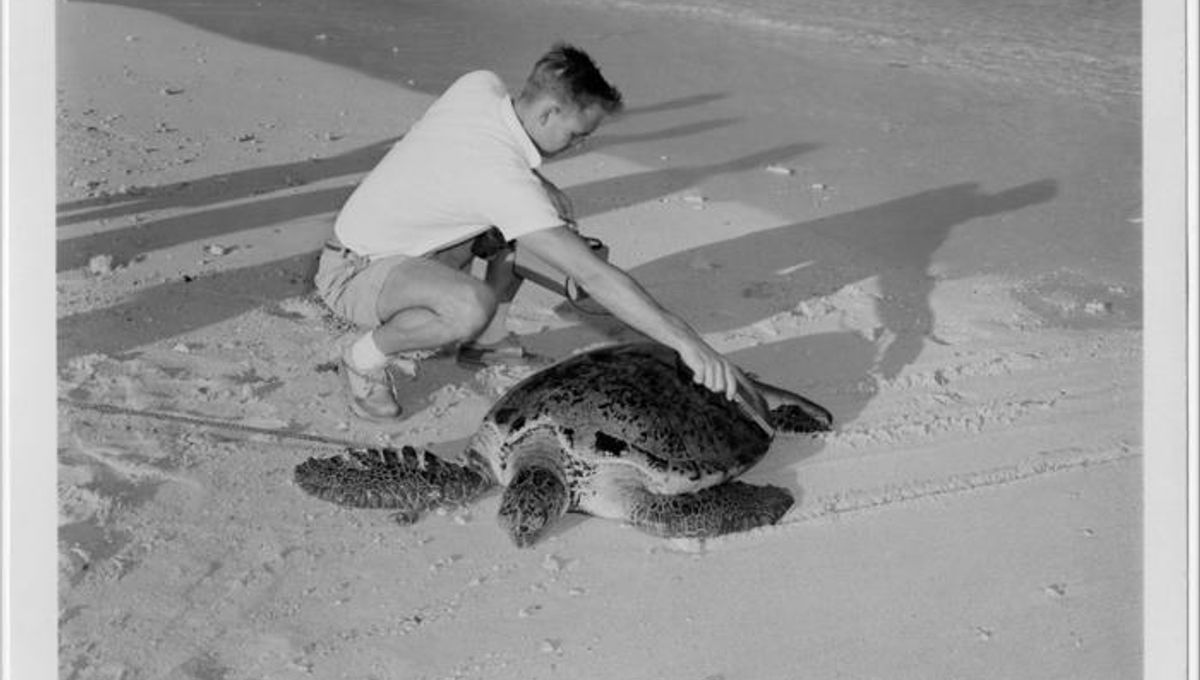Astonishing new research has delved into the shells of turtles and tortoises found near atomic bomb testing sites and nuclear waste dumping grounds. What the scientists discovered within the layers of keratin in these shells is truly remarkable – clear signatures of anthropogenic uranium from nuclear fallout.
These shells, much like tree rings, grow in layers and act as a “reservoir of environmental information.” This means they can be used as a powerful tool to reconstruct the history of nuclear bomb blasts, as explained by the researchers in their groundbreaking paper.
The team of scientists, hailing from the University of New Mexico and the Los Alamos National Laboratory, collected five shells from various hotspots associated with nuclear bomb use. These included a green sea turtle from the Republic of the Marshall Islands, a desert tortoise from southwestern Utah, a river cooter from the Savannah River Site in South Carolina, and a box turtle from the Oak Ridge Reservation in eastern Tennessee.
What they found was truly extraordinary. Some of the shells contained uranium signatures that closely aligned with specific nuclear events. For example, the shell from the Oak Ridge Reservation showed a uranium signature between 1955 and 1962, peaking in 1958, which directly corresponds to the airborne release of highly enriched uranium in the area.
One shell, in particular, stood out – the shell from the Marshall Islands. This remote group of islands served as the Pacific Proving Grounds for the US between 1946 and 1958, witnessing a staggering 67 nuclear tests. The legacy of these tests has left behind an unpleasant and haunting presence.

The green sea turtle shell used in this study was collected from the belly of a tiger shark caught near Enewetak Atoll in 1978, long after nuclear testing had ceased at the site. Despite this, the turtle’s shell still exhibited the uranium signatures.
The researchers propose two possible explanations for this phenomenon. One is that the cleanup activities at the Atoll stirred up old contaminated sediments, leaving traces of radionuclides in the turtle’s shell. The other possibility is that the legacy contamination from the bomb was still present in the atoll lagoon and made its way into the turtle’s shell through its diet of seagrass and algae.
It’s not just shell-capped reptiles that can provide insights into the history of atomic bombs. Coral skeletons and mollusk shells have been used in the past, and even the eyes of the long-living Greenland shark have proven surprisingly effective.
However, the researchers argue that turtles and tortoises, also known as chelonians, are particularly valuable for piecing together the history of nuclear activity on Earth. They hope that further research using these remarkable creatures will shed more light on how atomic bombs have shaped our planet.
“These animals are uniquely positioned to record information about human activities in nuclear landscapes over the long-term. Combining analyses of historically collected and modern specimens will significantly enhance our environmental monitoring capabilities in relation to ongoing nuclear contamination questions,” write the study authors in their conclusion.
The study has been published in the journal PNAS Nexus.








